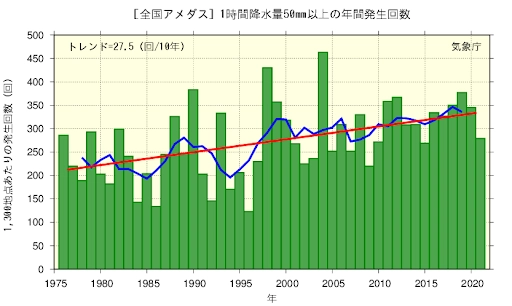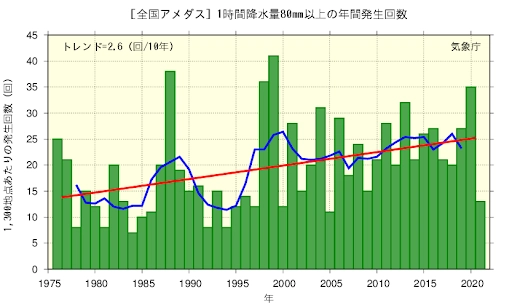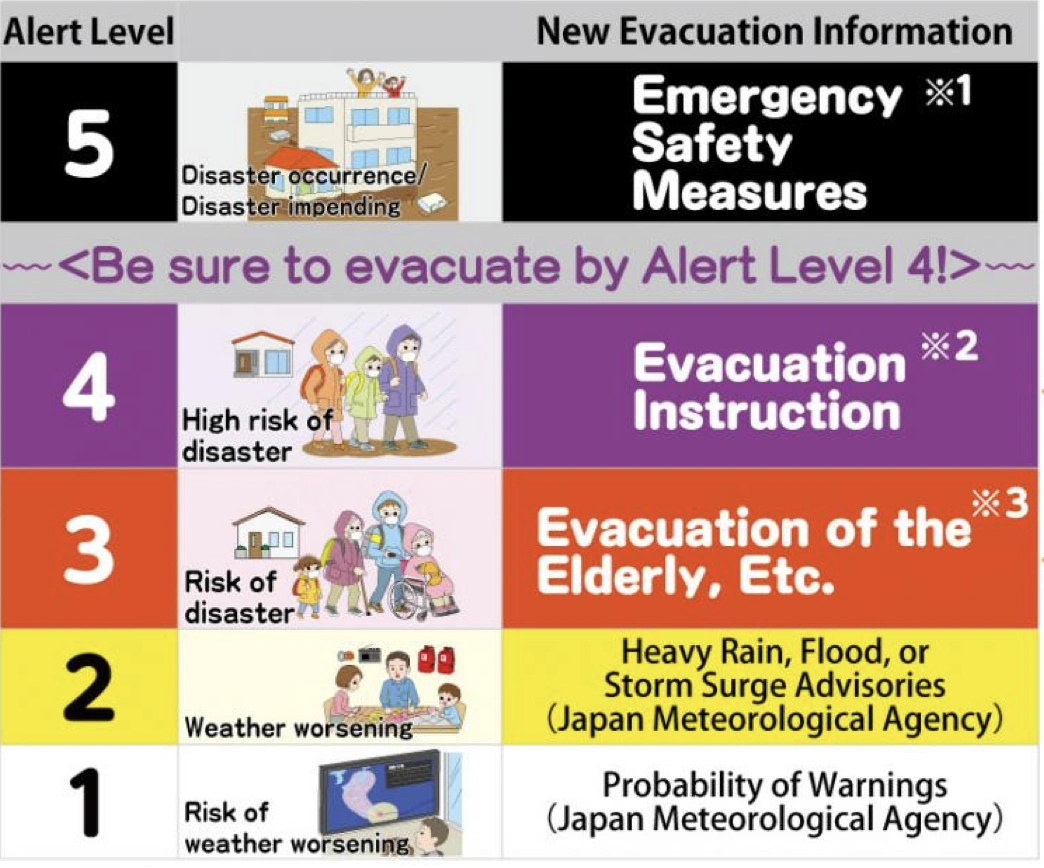1.Torrential rains in Japan in recent years

The vertical axis of the right graph shows the occurrences of rain that pours more than 50mm per hour. The horizontal axis shows the number of times heavy rainfall of The rainfall of 50 mm per year will be explained in detail later in the "Experience Report" page, but simply put, it is a disaster-prone, cascading rainfall. The overall trend is that the number of such strong rainfall events is increasing. According to the Japan Meteorological Agency, the average number of occurrences over the last 10 years is 1.4 times higher than the average number of occurrences over the first 10 years, a very serious situation.

The vertical axis of the right graph shows the occurrences of rain that poursmore than 80mm per hour. The horizontal axis shows the number of times heavy rainfall of 80 mm per year is a level at which disaster is almost certain to occur and is so intense that it is oppressively oppressive that it is difficult to breathe. Although the overall frequency is lower than the 50 mm/h rainfall, there is still an increasing trend. The average number of occurrences over the last 10 years has increased 1.7 times the average number of occurrences over the first 10 years, and the fact that there is an increasing trend over 50 mm/h suggests that the overall rainfall has increased significantly.
